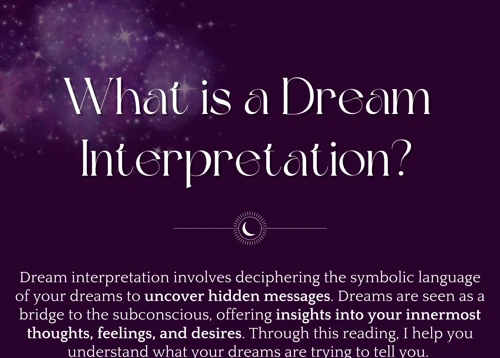Intrigued by the mysterious world of dreams and how they can offer profound insights into our subconscious mind? Curious to unravel the hidden messages and symbols that lay within our nightly adventures? Dream interpretation is a captivating tool for self-discovery, allowing us to delve into the depths of our psyche and make sense of our innermost desires, fears, and conflicts. In this article, we will explore the significance of dream interpretation, the common techniques used to decipher their meanings, and how to apply these insights to our personal growth and decision-making. So, let us embark on this enchanting journey of unraveling the mysteries of our dreams and unlock the wisdom they hold.
What is Dream Interpretation?
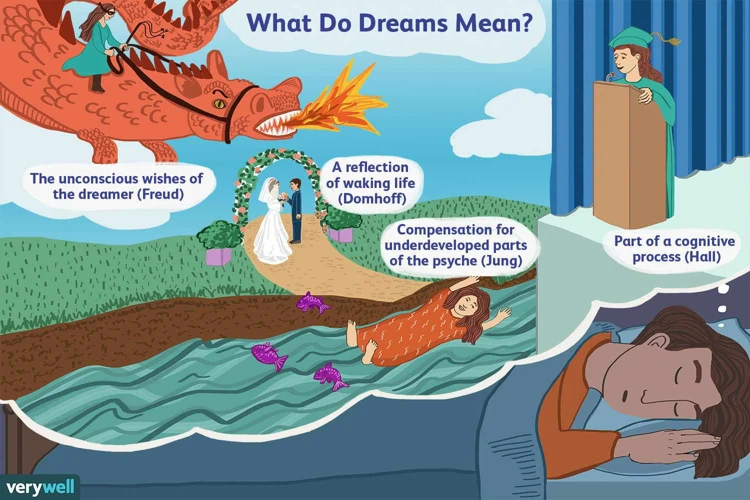
Dream interpretation is the process of analyzing the content and symbols of our dreams in order to gain a deeper understanding of their meaning and significance. It is a practice that has been used for centuries as a means of self-reflection and personal growth. Dreams are complex and multi-faceted, often containing a mixture of images, emotions, and scenarios that can be both perplexing and intriguing. Through the interpretation of dreams, we can uncover hidden messages from our subconscious mind, bringing to light our deepest desires, fears, and conflicts. Dream interpretation allows us to decode the symbolism present in our dreams and make connections to our waking life. Whether it’s experiencing a dream about falling, flying, or teeth falling out, each dream holds a unique message to be deciphered. Dream interpretation techniques vary, ranging from Freudian analysis to symbolic decoding, personal associations, and the Gestalt approach. By understanding the intricacies of dream interpretation, we can harness its power to gain valuable insights into ourselves and our journey of self-discovery. To learn more about Freudian dream analysis, you can explore here. Additionally, for a deeper understanding of analyzing dream symbols from a psychological perspective, you can read more here. Lastly, if you want to explore the connection between dreams and the unconscious mind, check this article here.
Why is Dream Interpretation Significant?

Dream interpretation holds significant importance as it serves as a powerful tool for self-discovery and personal growth. Our dreams are windows into the depths of our subconscious mind, revealing hidden desires, fears, and conflicts that may not be readily apparent in our waking life. By unraveling the symbolism and messages embedded within our dreams, we can gain valuable insights into ourselves and our inner world. Dream interpretation allows us to unveil the subconscious desires and fears that influence our thoughts and behaviors, providing a deeper understanding of our psyche. It also helps us identify and address inner conflicts that may be holding us back from realizing our full potential. Dream interpretation allows us to reflect on unresolved issues, giving us the opportunity to heal and find closure. By understanding the messages in our dreams, we can make informed decisions and navigate our personal growth journey with greater clarity and purpose. Dream interpretation offers a profound and enriching path towards self-discovery and self-actualization.
1. Unveiling subconscious desires and fears
2. Gaining insights into inner conflicts
Gaining insights into our inner conflicts is one of the significant aspects of dream interpretation. Dreams have a unique way of reflecting the unresolved tensions and conflicting emotions that we may be experiencing in our waking lives. When we analyze our dreams, we can identify the recurring themes and symbols that represent these inner conflicts. For example, a dream about being lost in a labyrinth could signify feelings of confusion and indecision in our waking life. By examining the emotions and scenarios present in our dreams, we can begin to unravel the underlying conflicts that we may not be consciously aware of.
One effective technique in gaining insights into inner conflicts is to keep a dream journal, where we record our dreams upon waking. This helps us capture the details and emotions fresh from the dream and provides a valuable resource for analysis. By reviewing our dream journal over time, patterns and themes may emerge, shedding light on recurring conflicts and unresolved issues that need addressing.
Another technique is to pay attention to the emotions evoked during and after the dream. Strong emotions in dreams often point to deep-seated conflicts we may be facing. For instance, if we have a recurring dream of being chased, the fear and anxiety we experience in the dream might indicate a conflict or issue we are trying to avoid in our waking life. By exploring these emotions and the circumstances surrounding them, we can gain valuable insights into the underlying conflicts and work towards resolving them.
Dream interpretation can also help us gain a fresh perspective on our inner conflicts. Dreams have a way of presenting symbolic scenarios that allow us to observe our conflicts and dilemmas from a detached viewpoint. By stepping outside of the emotional realm of our waking life, we can gain new insights and approaches to resolving our conflicts. The symbolism and narrative of our dreams act as a mirror, reflecting back to us the different aspects of our inner conflicts that we may not have been aware of or fully understood.
Gaining insights into inner conflicts is a crucial aspect of dream interpretation. By analyzing recurring themes, recording dreams in a journal, paying attention to emotions, and gaining a fresh perspective, we can unravel and better understand the underlying conflicts we face. This self-awareness and understanding can lead to personal growth and ultimately help us find ways to resolve our inner conflicts in our waking life.
3. Reflecting on unresolved issues
Reflecting on unresolved issues is a crucial aspect of dream interpretation as a tool for self-discovery. Our dreams often serve as a platform for our subconscious mind to bring unresolved issues to the forefront of our awareness. These unresolved issues may be related to past traumas, unresolved conflicts, or unfulfilled desires. When we pay attention and analyze our dreams, we can gain insights into these issues and begin the process of healing and growth. It is not uncommon for dreams to present scenarios or symbols that represent situations we have avoided dealing with or emotions we have suppressed. By reflecting on these unresolved issues, we can confront them in a safe and controlled environment, allowing us to better understand their impact on our emotional well-being and behavior. For example, recurring dreams of being chased may indicate a deep-seated fear or sense of avoidance that needs to be addressed. Similarly, dreams involving water could signify unresolved emotions or a need for emotional release and cleansing. By reflecting on these dream scenarios, we can identify the underlying issues and take steps towards resolution in our waking life. Dream interpretation is a powerful tool for self-reflection and can provide valuable insights into the areas of our lives where unresolved issues lie dormant. It allows us to confront these issues head-on, facilitating personal growth and ultimately leading to a sense of wholeness and fulfillment.
4. Guiding personal growth and decision-making
- Self-reflection: Dream interpretation provides an opportunity for deep self-reflection, allowing individuals to gain insights into their own thoughts, emotions, and experiences. By analyzing the symbolism and themes present in their dreams, individuals can gain a better understanding of their desires, fears, and motivations, leading to personal growth.
- Uncovering subconscious beliefs: Dreams often tap into our subconscious mind, where deep-rooted beliefs and patterns reside. By interpreting dreams, individuals can uncover these hidden beliefs and gain awareness of any limiting beliefs or negative thought patterns that may be hindering their personal growth.
- Exploring unresolved issues: Dreams have a way of bringing unresolved issues to the surface. When we interpret our dreams, we have the opportunity to confront and work through these unresolved issues. This process can be cathartic and empowering, leading to personal growth and a sense of closure.
- Gaining clarity: Dreams can provide clarity in decision-making processes. By exploring and interpreting the symbols and messages in dreams, individuals can gain insights into their own desires, fears, and motivations, helping them make more informed decisions in their waking life.
- Self-awareness: Dream interpretation fosters self-awareness, allowing individuals to develop a deeper understanding of themselves. By engaging in this practice, individuals become more attuned to their emotions, desires, and fears, ultimately leading to personal growth and a greater sense of self.
Common Techniques of Dream Interpretation
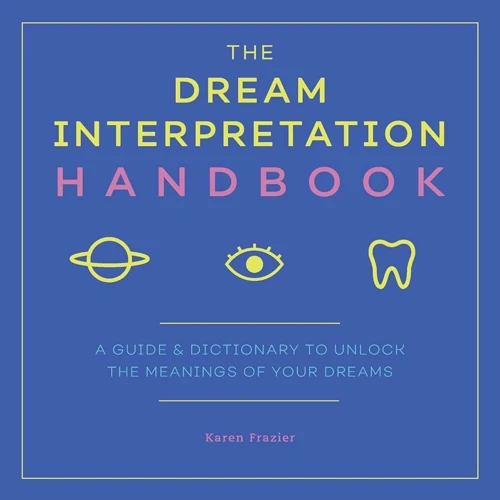
Dream interpretation involves various techniques that help decode the meanings behind our dreams. These techniques provide valuable insights into the symbolism and messages present in our dreams, aiding in self-discovery and personal growth.
- Jungian Analysis: Developed by Carl Jung, this approach focuses on the collective unconscious and archetypes. It looks at the various symbols and motifs in dreams to gain a deeper understanding of their meaning.
- Freudian Analysis: Sigmund Freud’s psychoanalytic approach to dream interpretation emphasizes the significance of repressed desires and unconscious conflicts. Through analyzing dream content, Freud believed that unconscious thoughts and emotions could be brought to light.
- Symbolic Decoding: This method involves interpreting the symbols and imagery present in dreams. Each symbol holds personal significance and may vary from person to person, requiring careful analysis and personal associations.
- Personal Associations: This technique focuses on the individual’s unique associations with specific dream elements. By exploring personal memories, experiences, and emotions associated with dream symbols, deeper meanings can be uncovered.
- Gestalt Approach: The Gestalt approach looks at dreams as a whole, considering the overall structure and narrative. It explores the emotional tone and the relationships between dream elements to gain a holistic understanding.
By utilizing these different techniques, dream interpreters can delve into the rich tapestry of our dreams, unraveling their hidden meanings and guiding us towards greater self-awareness.
1. Jungian Analysis
Jungian Analysis is a powerful technique in dream interpretation developed by the renowned Swiss psychiatrist, Carl Jung. It focuses on the belief that dreams are a doorway to the unconscious mind, where archetypal symbols and collective experiences reside. In Jungian Analysis, dreams are seen as a reflection of the individual’s personal and collective unconscious, containing symbols that represent universal themes and patterns of human existence. Dream symbols, according to Jung, are not solely based on personal experiences but are also influenced by the collective experiences of humankind throughout history. To interpret dreams using the Jungian approach, one must examine the symbolism and archetypes present in the dream. Archetypes are manifestations of universal themes and carry deep, symbolic meanings that can shed light on our own psychological development and spiritual journey. By exploring these archetypal symbols within our dreams, we can gain insight into our personal growth, uncover hidden aspects of ourselves, and gain a better understanding of our place in the world. In Jungian Analysis, dream work often involves keeping a dream journal, analyzing recurring dream images, and exploring the personal associations and emotions connected to these symbols. Through the process of Jungian Analysis, individuals can uncover profound insights about their own psyche and embark on a journey of self-discovery and personal transformation.
2. Freudian Analysis
Freudian analysis, developed by Sigmund Freud, is a prominent technique used in dream interpretation. According to Freud, dreams are a portal to the unconscious mind and serve as manifestations of repressed desires and wishes. Freud believed that dreams were symbolic representations of our unconscious conflicts and desires, often stemming from childhood experiences. In Freudian analysis, the focus is on unraveling the hidden meaning behind dream symbols and imagery. One key concept in Freudian analysis is the notion of manifest content versus latent content. The manifest content refers to the literal elements and events that occur in the dream, while the latent content is the underlying, symbolic meaning behind those elements. For example, dreaming about climbing a mountain could symbolize a sense of achievement or overcoming obstacles in one’s waking life. Another important aspect of Freudian analysis is the interpretation of sexual symbolism, where many dream symbols are believed to represent sexual desires or frustrations. Freudian analysis also emphasizes the significance of the dreamer’s personal associations and experiences, as these shape the unique meaning of their dreams. By delving into the depths of the unconscious mind through Freudian analysis, we can gain valuable insights into our desires, fears, and conflicts, enabling us to navigate our personal growth and self-discovery journey with greater understanding.
3. Symbolic Decoding
Symbolic decoding is a powerful technique used in dream interpretation to unravel the hidden meanings behind the symbols present in our dreams. Dreams often present us with a myriad of symbols, such as objects, animals, people, or situations, which carry deeper significance beyond their literal representation. When engaging in symbolic decoding, it is essential to approach the symbols with an open mind and consider their personal and cultural associations. For example, a dream featuring a snake may be interpreted in many ways, including as a symbol of transformation, healing, or deception, depending on the dreamer’s individual experiences and beliefs. Symbolic decoding involves analyzing the context of the dream, the emotions experienced, and the personal associations evoked by the symbols. This technique requires exploring the symbolism through introspection and reflection, allowing the dreamer to make connections between the symbolic elements in the dream and their own life experiences. It is important to note that symbols can have both universal meanings and individual interpretations, making this a deeply personal and subjective process. By delving into symbolic decoding, we can uncover the hidden messages and insights that our dreams are trying to convey, shedding light on our innermost thoughts, desires, and concerns.
4. Personal Associations
Personal associations is a technique used in dream interpretation that focuses on an individual’s unique and personal connections to the symbols and elements present in their dreams. It involves reflecting on the personal context, experiences, and emotions associated with specific dream symbols, allowing for a more tailored and individualized interpretation. By examining the personal associations, we can gain a deeper understanding of the underlying meaning and significance of our dreams. For example, if someone dreams about a cat, the personal associations may vary depending on their own experiences with cats. For one person, a cat may symbolize independence and grace, while for another person, it may represent vulnerability or fear due to a childhood incident. By exploring personal associations, we can uncover the deeply personal and subjective meanings behind the symbols in our dreams. This technique encourages self-reflection and introspection, allowing us to connect our dreams to our own unique life experiences and emotions. It offers a more individualized approach to dream interpretation, empowering individuals to interpret their dreams based on their own personal associations and understanding. By delving into personal associations, we can gain valuable insights into our own psyche and use these interpretations to navigate our personal growth and self-discovery.
5. Gestalt Approach
The Gestalt approach is a valuable technique used in dream interpretation that focuses on the overall structure and meaning of a dream. In this approach, the dream is viewed as a complete and unified entity, rather than analyzing individual symbols or elements in isolation. The word “Gestalt” itself means “form” or “shape” in German, and it emphasizes the importance of looking at the dream as a whole. This approach considers the dream to be a reflection of the dreamer’s current psychological state and attempts to uncover the underlying themes and patterns therein.
When using the Gestalt approach, the dream interpreter encourages the dreamer to explore the feelings and emotions experienced during the dream, as well as any significant interactions or relationships depicted. By focusing on the overall experience of the dream, the interpreter aims to help the dreamer gain a deeper understanding of their personal experiences and perceptions.
One technique commonly employed in the Gestalt approach is the “empty chair” technique. In this method, the dreamer is asked to imagine that different aspects or characters from the dream are present in empty chairs. The dreamer is then prompted to have a conversation or engage in a role-play with these imagined figures, allowing for a deeper exploration of the dream’s meaning and the dreamer’s own internal conflicts or desires.
The Gestalt approach emphasizes the importance of personal experience and subjective interpretation, understanding that each dreamer brings their own unique perspective and history to the dream. By considering the dream as a coherent and unified entity, the Gestalt approach encourages a holistic understanding of the dream’s messages and their relevance to the dreamer’s waking life.
The Gestalt approach is a valuable tool in dream interpretation that focuses on the overall structure and meaning of the dream. Through this approach, dreamers can gain a deeper understanding of their psychological state and explore the underlying themes and patterns within their dreams. By considering the dream as a whole, rather than dissecting individual symbols, the Gestalt approach offers a comprehensive and personalized approach to unlocking the meaning of dreams.
Interpreting Common Dream Symbols

Interpreting common dream symbols is a fascinating endeavor that can provide profound insights into our subconscious mind. These symbols often appear in our dreams and carry hidden meanings that can guide us on our journey of self-discovery. Some of the most common dream symbols include falling, flying, teeth falling out, being chased, and water. Each symbol holds its own significance and can vary in interpretation based on the individual’s personal experiences and associations. For example, falling in a dream could represent a lack of control or insecurity, while flying may symbolize freedom or empowerment. Teeth falling out might reflect anxiety about appearance or communication, and being chased could signify avoidance or unresolved conflict. Water can represent a range of emotions and the ebb and flow of life. Understanding the symbolism behind these common dream symbols allows us to decode the messages our subconscious mind is trying to communicate. By diving deep into the interpretations of these symbols, we can gain valuable insights into our innermost thoughts, desires, and fears.
1. Falling
Falling is a common and powerful dream symbol that often represents a loss of control or a sense of insecurity. When we dream of falling, it can evoke intense emotions such as fear, anxiety, or vulnerability. The sensation of falling can be accompanied by physical sensations, such as a sudden jolt or a sinking feeling in the stomach.
The interpretation of falling in dreams can vary depending on the context and personal experiences of the dreamer. In some cases, falling may reflect a fear of failure or a perceived lack of support in waking life. It can also symbolize a metaphorical “fall from grace” or a loss of status or reputation.
On the other hand, falling in dreams can also be viewed as an opportunity for personal growth and transformation. It may indicate a need to let go of control and surrender to the natural flow of life. Falling dreams can encourage us to confront our fears and develop resilience in the face of challenges.
It’s important to consider the emotions and circumstances surrounding the falling dream. Are you actively trying to prevent the fall, or are you surrendering to it? Are you falling into water or a void? These details can provide additional clues to the dream’s meaning.
Ultimately, the interpretation of falling in dreams is highly subjective and can vary from person to person. It’s important to explore your own feelings and associations with falling to uncover its specific message for you.
2. Flying
Flying is a commonly experienced dream symbol that holds significant meaning in dream interpretation. When we dream of flying, it symbolizes a sense of freedom, liberation, and empowerment. It represents a release from the constraints and limitations of our waking life. Flying in dreams often elicits feelings of joy, excitement, and exhilaration, as we soar through the sky with ease and grace. This dream symbol can also be associated with transcending obstacles or overcoming challenges in our lives. It signifies a sense of rising above difficulties and gaining a new perspective. The act of flying in dreams can be interpreted as a reflection of our aspirations, ambitions, and the desire to reach new heights. It may indicate a need for liberation or a longing for personal growth and exploration. Flying dreams can also indicate a sense of control and mastery over our lives, as we navigate through the dream landscape with confidence and grace. However, it’s essential to examine the emotions and context surrounding the dream to fully understand its individual significance. Every person’s interpretation of flying dreams may differ based on their unique experiences and circumstances. By analyzing the symbolism and emotions associated with flying dreams, we can gain valuable insights into our deepest desires, aspirations, and the paths we wish to pursue in our waking life.
3. Teeth Falling Out
Teeth falling out is a commonly reported and intriguing dream symbol that holds significant meaning in dream interpretation. The sensation of teeth crumbling, loosening, or falling out can evoke feelings of vulnerability and powerlessness. In dream analysis, this symbol is often associated with issues of self-esteem, communication, and personal image. A dream of teeth falling out could signify a fear of losing one’s attractiveness or the ability to effectively express oneself. It may also indicate anxieties about aging or concerns about one’s physical appearance and how it is perceived by others. This dream symbol can also be linked to feelings of powerlessness and a lack of control in certain situations, including difficulties in asserting oneself or standing up for one’s beliefs. The interpretation of this dream symbol can vary based on the context and personal experiences of the dreamer. Some possible interpretations include:
- Loss of Power: Dreaming of teeth falling out may represent a sense of powerlessness or vulnerability in waking life. It could be associated with situations where the dreamer feels helpless or lacks control.
- Insecurity and Self-Esteem: This dream symbol may indicate underlying insecurities or low self-esteem. It could signify a fear of judgment or rejection, particularly related to one’s physical appearance or the ability to communicate effectively.
- Fear of Aging: Dreaming of teeth falling out might also reflect concerns about aging and the loss of youthfulness. It could represent anxieties about the physical signs of aging or the potential decline in one’s vitality and attractiveness.
- Lack of Communication: Alternatively, this dream symbol could suggest difficulties in expressing oneself or being heard. It might indicate a fear of miscommunication or a struggle to convey thoughts and feelings effectively.
As with all dream symbols, the interpretation of teeth falling out can vary from person to person. It is essential to consider the individual’s unique experiences, emotions, and circumstances when extracting meaning from this symbol. Keeping a dream journal and reflecting on the personal associations and emotions connected to the dream can provide valuable insights into its interpretation. By exploring these meanings further, individuals can gain a better understanding of themselves and the underlying issues they may need to address in their waking life.
4. Being Chased
One of the most common and anxiety-inducing dreams is the experience of being chased. This dream often leaves us with a racing heart and a sense of urgency. But what does it mean to dream about being chased? Being chased in a dream is often symbolic of avoiding or running away from something in our waking life that we find threatening or overwhelming. It represents a fear or a situation that we are trying to escape from. The person or thing that is chasing us can offer clues about the source of our anxiety. It could be a person, an animal, or even a shadowy figure. When we are chased in a dream, it is important to pay attention to our emotions and reactions during the dream. Are we filled with fear and panic, or do we feel a sense of excitement and thrill? This can give us further insight into how we are dealing with the challenges and obstacles in our waking life. Additionally, the environment and the outcome of the chase can hold significance. If we are able to elude our pursuer and escape, it may indicate that we have the strength and resilience to overcome our problems. However, if we are caught or unable to outrun our pursuer, it may suggest that we feel trapped or overwhelmed by a certain situation. To gain a deeper understanding of the meaning behind a dream about being chased, it is important to consider the context of our lives and the emotions we associate with the dream. Reflecting on our fears and examining the sources of stress in our waking life can offer valuable insights into the message our subconscious is trying to convey. By doing so, we can begin to confront and address the challenges that we may be avoiding.
5. Water
The symbol of water in dreams is a powerful and versatile one, carrying a range of meanings depending on the context and personal associations. Water is often associated with emotions, representing the deep reservoirs of our feelings and the subconscious mind. When water appears in a dream, it can indicate the ebb and flow of emotions we may be experiencing in our waking life. Calm and clear water generally signifies harmony and tranquility, reflecting a sense of emotional balance and peace. On the other hand, turbulent or choppy waters may suggest emotional turmoil or unresolved conflicts. The depth of the water can also hold symbolism, with shallow water representing superficial emotions and deeper waters representing more profound and hidden emotions. Additionally, the presence of water in dreams can symbolize purification, renewal, and healing. It can also symbolize the need for emotional nourishment or the desire for a fresh start. To interpret the meaning of water in a dream, it is essential to consider the specific details and emotions associated with the dream scenario. Water in dreams serves as a potent symbol to explore our emotional landscape and gain insights into our subconscious mind.
The Role of Emotions in Dream Interpretation
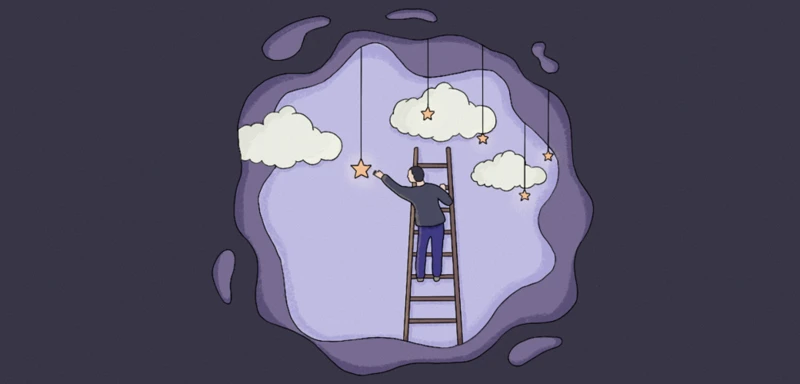
Emotions play a crucial role in dream interpretation, as they offer valuable clues to understanding the underlying messages and themes within our dreams. When we dream, we often experience a range of intense emotions, such as fear, joy, sadness, or excitement. These emotions serve as a compass, guiding us towards the significance of the dream. For example, a dream filled with fear and anxiety may indicate unresolved fears and insecurities in our waking life that need to be addressed. On the other hand, a dream filled with joy and excitement can signify a sense of fulfillment and contentment in our current circumstances. By paying close attention to these emotions, we can uncover the underlying emotional patterns and identify areas of our life that may be causing stress or happiness. It is important to note that emotions can sometimes be conflicting in dreams, reflecting inner conflicts or ambivalence that we may be experiencing in our waking life. For instance, a dream where we feel both fear and excitement may suggest that we are torn between taking risks and playing it safe in a particular situation. Analyzing the emotional tone of our dreams allows us to gain a deeper understanding of our innermost feelings, desires, and concerns. By recognizing and acknowledging these emotions, we can integrate their messages into our waking life and make informed choices for personal growth and self-discovery.
Keeping a Dream Journal

Keeping a dream journal is a valuable practice for anyone interested in dream interpretation and self-discovery. By recording our dreams in a journal, we create a personal archive of our dream experiences, allowing us to revisit and analyze them at a later time. Writing down our dreams as soon as we wake up helps to capture the details and emotions that may fade throughout the day. It is important to be as detailed as possible, describing the setting, characters, events, and any emotions or sensations felt during the dream. Using highlighters or colored pens to emphasize significant elements or symbols can be helpful for future analysis. Regularly reviewing our dream journal can reveal patterns, recurring themes, and symbols that may provide valuable insights into our subconscious mind. It is also helpful to note any notable events or experiences that occurred in our waking life around the same time as the dream, as there may be connections or correlations to explore. By maintaining a dream journal, we create a personal roadmap to our innermost thoughts, feelings, and desires, ultimately aiding in our journey of self-discovery.
Working with a Dream Therapist

Working with a dream therapist can be a transformative experience, offering valuable guidance and insight into the meaning of our dreams. A dream therapist is a trained professional who specializes in the interpretation and analysis of dreams, using their expertise to help individuals navigate the intricate landscapes of their dream world.
During a session with a dream therapist, the individual is encouraged to share the details of their dreams, including the emotions, symbols, and narrative elements present. The therapist then employs various techniques to analyze and interpret the dream, taking into consideration the individual’s personal experiences, beliefs, and current life circumstances. This collaborative process allows for a deeper exploration of the dream’s meaning and its relevance to the individual’s waking life.
One common technique used by dream therapists is to explore the symbolism present in the dream. Symbols can vary greatly from person to person, so it’s important for the therapist to understand each individual’s unique personal associations. By delving into these symbols, the therapist can help uncover underlying themes and messages.
Another approach utilized by dream therapists is to examine the emotions elicited by the dream. Emotions are a powerful tool for understanding the subconscious mind, and by exploring the feelings experienced during the dream, the therapist can gain insight into the individual’s innermost desires, fears, and conflicts.
Working with a dream therapist provides a safe and supportive environment for individuals to explore the depths of their dreams and gain a deeper understanding of themselves. It offers an opportunity for self-reflection, healing, and personal growth. By partnering with a dream therapist, individuals can tap into the limitless wisdom of their dreams and use it as a powerful tool for self-discovery.
Applying Dream Interpretation to Self-discovery
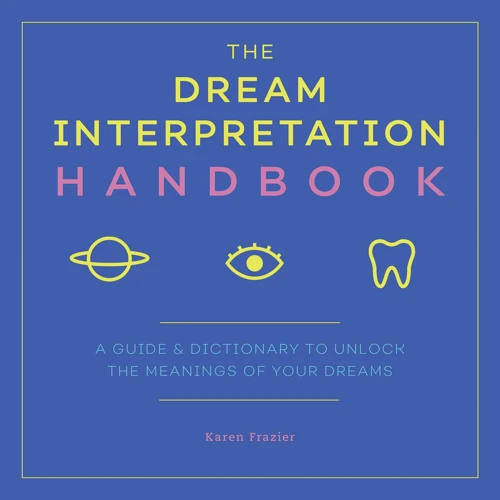
Applying dream interpretation to self-discovery is a powerful tool for personal growth and understanding. By identifying recurring dream patterns, we can uncover themes and motifs that may reflect unresolved issues or hidden desires within ourselves. Analyzing personal dream symbolism allows us to decipher the meanings behind specific images and symbols that appear in our dreams, providing valuable insights into our subconscious mind. Integrating these dream insights into our daily life involves reflecting on the messages and lessons learned from our dreams and finding ways to apply them practically. Whether it’s making important life decisions or gaining guidance for personal growth, dream interpretation allows us to tap into the wisdom of our dreams and use it as a valuable resource for self-discovery.
1. Identifying recurring dream patterns
- Keep a dream journal: Start by recording your dreams in a journal every morning as soon as you wake up. Pay attention to any recurring elements, such as people, places, objects, or themes. This will help you identify patterns over time.
- Reflect on common themes: Look for common themes or motifs that frequently appear in your dreams. For example, you may notice recurring dreams about being chased, falling, or being in unfamiliar places. These patterns can provide valuable insights into your subconscious fears or unresolved issues.
- Notice emotional reactions: Pay attention to the emotions evoked by your recurring dream patterns. Do you feel fear, anxiety, or joy? Emotions can provide clues about the underlying meaning and significance of these dreams.
- Consult with a dream therapist: If you’re having difficulty identifying recurring dream patterns on your own, working with a dream therapist or analyst can be beneficial. They have the expertise to assist you in recognizing and understanding the recurring symbols and themes in your dreams.
- Explore dream interpretation resources: There are numerous books, websites, and resources available on dream interpretation that can provide guidance in identifying recurring dream patterns. These resources often contain symbol dictionaries or interpretations that can help you decipher the meaning behind your dreams.
2. Analyzing personal dream symbolism
Analyzing personal dream symbolism is a fundamental aspect of dream interpretation that allows us to uncover the unique meanings behind the symbols we encounter in our dreams. Our dreams are highly individualized, and the symbols within them hold personal significance based on our own experiences, emotions, and beliefs.
When analyzing dream symbolism, there are several key steps to consider:
1. Identify recurring symbols: Take note of any symbols that frequently appear in your dreams. These recurring symbols often carry a deeper meaning or message.
2. Explore personal associations: Reflect on your personal associations with each symbol. Consider what the symbol represents to you personally, the emotions it evokes, and any memories or experiences connected to it.
3. Consider cultural and universal symbolism: While personal associations are important, it’s also valuable to explore any cultural or universal symbolism that may be associated with a particular symbol. Certain symbols may have shared meanings across different cultures and can offer additional insight into the dream’s message.
4. Connect dream symbols to waking life: Look for connections between the symbols in your dreams and events or situations in your waking life. Symbols often represent aspects of ourselves, our relationships, or our current life circumstances.
5. Trust your intuition: Ultimately, trust your own intuition and gut feelings when interpreting dream symbolism. You are the best judge of what a symbol means to you personally.
By analyzing personal dream symbolism, we can uncover the hidden messages and guidance that our dreams offer. Remember, dream interpretation is a deeply personal and subjective practice, and each individual will have their own unique understanding of their dreams. Embrace the journey of self-discovery that dream analysis provides as you explore the rich symbolism within your dreams.
3. Integrating dream insights into daily life
- Reflect on the dream: Take some time each morning to reflect on your dream and the insights it provided. Think about the emotions, symbols, and themes present in the dream. Consider how they might relate to your current waking life.
- Journaling: Keep a dream journal and write down the details of your dreams as soon as you wake up. This practice helps to solidify the dream in your memory and allows you to revisit it later for analysis. Use the journal to explore the emotions and symbolism in your dreams, and how they may connect to your daily experiences.
- Identify patterns: Look for recurring patterns or themes in your dreams. Pay attention to any recurring symbols or situations. They can offer valuable insights into persistent emotions, challenges, or areas of growth in your life.
- Discuss with others: Share your dreams with trusted friends, family, or a dream therapist. Engaging in conversation about your dreams can provide different perspectives and help you gain new insights.
- Apply dream insights to daily life: Once you have gained insights from your dreams, find practical ways to apply them to your daily life. For example, if you consistently dream about being chased, it could indicate a need to confront and address something in your waking life that you have been avoiding.
- Creating rituals: Incorporate dream-related rituals into your daily routine. This could include reflection exercises, visualization techniques, or setting intentions before bed. These rituals can help to deepen your connection with your dreams and strengthen the integration of dream insights into your daily life.
- Seek guidance: If you find it challenging to interpret or integrate dream insights on your own, consider working with a dream therapist or participating in dream interpretation groups. These resources can provide additional support and perspectives in understanding the deeper meanings of your dreams.
4. Seeking guidance for personal growth
Seeking guidance for personal growth is a powerful way to harness the potential of dream interpretation and apply it to our lives. Dreams often act as a mirror, reflecting our innermost thoughts, emotions, and concerns. By studying our dreams and working with a dream therapist or interpreter, we can gain valuable insights and guidance in our journey of self-discovery and personal development.
- Exploring recurring dream patterns: One way to seek guidance through dream interpretation is to identify recurring dream patterns. These are dreams that occur repeatedly over a period of time, delivering consistent messages or themes. By paying attention to these patterns, we can uncover deeper layers of meaning and understand the unresolved issues or conflicts that may be holding us back in our personal growth.
- Analyzing personal dream symbolism: Dreams are highly subjective and personal. Each individual may have their own set of symbols and imagery that hold specific meanings for them. By analyzing the symbolism that appears in our dreams, we can gain insight into our subconscious mind and uncover hidden aspects of ourselves. This can help us identify areas for growth and transformation.
- Integrating dream insights into daily life: Once we have interpreted the messages and symbolism in our dreams, it is important to integrate these insights into our daily lives. This can involve making conscious changes, resolving conflicts, or taking actions aligned with the guidance received from our dreams. By actively incorporating dream insights into our waking life, we can accelerate our personal growth and move closer to our goals.
- Seeking guidance for personal growth: Dream interpretation can be a valuable tool for seeking guidance and direction in our personal growth journey. It can help us gain clarity on important life decisions, provide a fresh perspective on challenges, and offer guidance on how to overcome obstacles. Working with a dream therapist or interpreter can provide additional support and expertise in understanding the deeper meaning of our dreams, and how to apply that knowledge for personal growth.
By seeking guidance for personal growth through dream interpretation, we can tap into the wisdom of our subconscious mind and unlock the potential for transformation and self-discovery.
Common Dream Interpretation Misconceptions
When it comes to dream interpretation, there are several misconceptions that can cloud our understanding and hinder our ability to uncover the true meanings behind our dreams. Let’s address some of these misconceptions one by one:
- Dreams are meaningless: One common misconception is that dreams are simply random and hold no significance. However, research suggests that dreams serve as a reflection of our subconscious mind and can provide valuable insights into our emotions, thoughts, and experiences.
- Dreams predict the future: While dreams can sometimes seem prophetic, it’s important to recognize that they are not a crystal ball for future events. Dreams are subjective and symbolic representations of our innermost thoughts and feelings, rather than literal predictions of what is to come.
- There is only one universal meaning for dream symbols: Dreams are highly personal and can vary greatly from person to person. Consequently, dream symbols can have different meanings based on an individual’s unique experiences, cultural background, and personal associations.
- Every dream needs to be interpreted: Not every dream carries profound meaning or requires interpretation. Some dreams may simply be a reflection of daily experiences or a way for our brain to process information. It’s important to distinguish between significant dreams and those that are merely random or fleeting.
- Dream interpretation is an exact science: Dream interpretation is more of an art than a science. While there are established techniques and theories, the interpretation of dreams involves subjective analysis and personal insight. It’s important to approach dream interpretation with an open mind and a willingness to explore different perspectives.
By dispelling these common misconceptions, we can approach dream interpretation with a clearer understanding and embrace the transformative power of our dreams in our journey of self-discovery.
Conclusion
In conclusion, dream interpretation is a powerful tool for self-discovery and personal growth. It allows us to tap into the depths of our subconscious mind, unveiling hidden desires, fears, and conflicts. By analyzing the content and symbols of our dreams, we can gain valuable insights into our psyche and make connections to our waking life. Through techniques such as Jungian or Freudian analysis, symbolic decoding, personal associations, and the Gestalt approach, we can decipher the messages that our dreams are trying to convey. By keeping a dream journal and working with a dream therapist, we can enhance our understanding and delve even deeper into the meaning behind our dreams. Dream interpretation helps us to identify recurring patterns, analyze personal dream symbolism, integrate dream insights into our daily lives, and seek guidance for personal growth and decision-making. While there are misconceptions surrounding dream interpretation, it is important to approach it with an open mind and recognize its potential for self-exploration. So let us embrace the enchanting world of dreams, honor their wisdom, and embark on a journey of self-discovery through the art of dream interpretation.
Frequently Asked Questions
1. Can dream interpretation really provide insights into my subconscious mind?
Yes, dream interpretation is an effective tool for unveiling the hidden desires, fears, and conflicts that reside within your subconscious mind. By analyzing the symbols and themes in your dreams, you can gain valuable insights into your inner thoughts and emotions.
2. Are there different techniques for interpreting dreams?
Absolutely! There are various techniques for dream interpretation, including Jungian analysis, Freudian analysis, symbolic decoding, personal associations, and the Gestalt approach. Each technique offers a unique perspective on uncovering the meaning behind your dreams.
3. Do all dreams have symbolic meanings?
While not all dreams have symbolic meanings, many do. Dreams often use symbols and metaphors to convey messages from your subconscious. Understanding these symbols can provide valuable insights into your emotions, thoughts, and experiences.
4. Can recurring dreams indicate something significant?
Yes, recurring dreams often indicate underlying themes and unresolved issues in your life. Paying attention to recurring dream patterns can help you identify areas of your life that need attention or healing.
5. How can dream interpretation be applied to personal growth?
Dream interpretation can be a powerful tool for personal growth. By analyzing your dreams, you can gain clarity about your desires, fears, and conflicts. This newfound understanding can guide your decision-making and help you navigate personal challenges more effectively.
6. Do dreams have universal meanings, or are they personal to each individual?
Dreams can have both universal and personal meanings. While some symbols may have shared interpretations across cultures, it’s important to consider your own experiences, emotions, and beliefs when interpreting your dreams.
7. How can I remember my dreams more vividly?
Keeping a dream journal by your bedside can help you remember your dreams more vividly. As soon as you wake up, write down any details, emotions, or symbols that you remember. This practice can enhance dream recall over time.
8. Is it necessary to work with a dream therapist for dream interpretation?
While it’s not necessary to work with a dream therapist, their expertise can offer valuable insights and guidance during the interpretation process. A dream therapist can help you explore the deeper meanings behind your dreams and provide support in your journey of self-discovery.
9. Can dreams provide guidance for making important life decisions?
Absolutely! Dreams can often offer unique perspectives and insights that can guide your decision-making process. By paying attention to the messages and symbols in your dreams, you may gain clarity and a deeper understanding of the choices before you.
10. Is dream interpretation a scientific practice?
Dream interpretation is not considered a strictly scientific practice. However, it is widely recognized as a valuable tool for self-reflection, personal growth, and understanding the depths of the human psyche.

